Instructable Storyboards and Ira Glass
Laser-cut Box Instructable
For our video project we will make an instructable video on making a laser cut box. The video has a few stages:
Sketch box on paper
Design box using makercase.com and Adobe Illustrator
Purchase materials from Canal Plastics
Laser cut acrylic
Assemble parts with acrylic cement
Note we've already cleared this with ITP Shop Staff. We make sure our video is factually accurate and properly observes shop rules.
We made some storyboards to clarify our thinking.


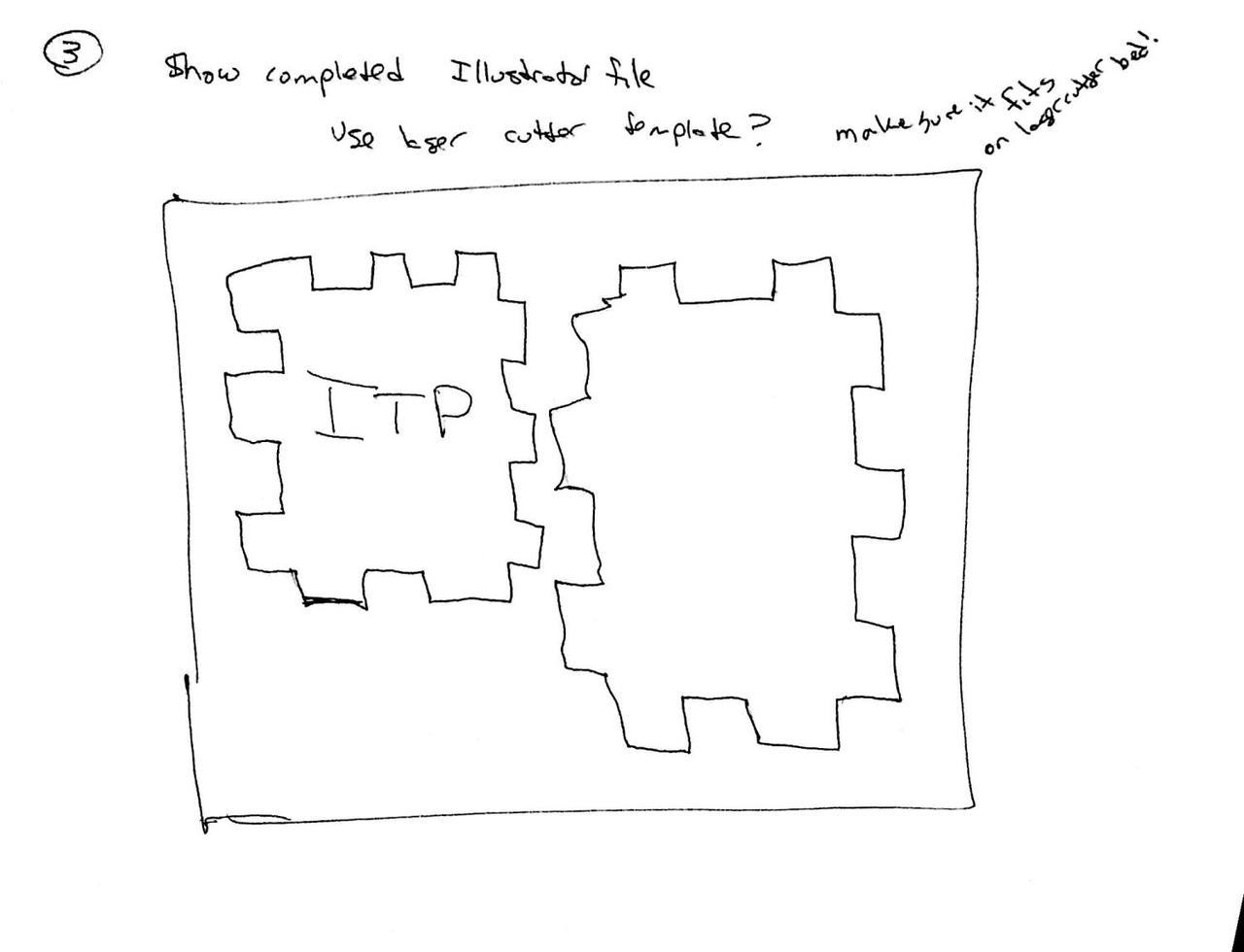
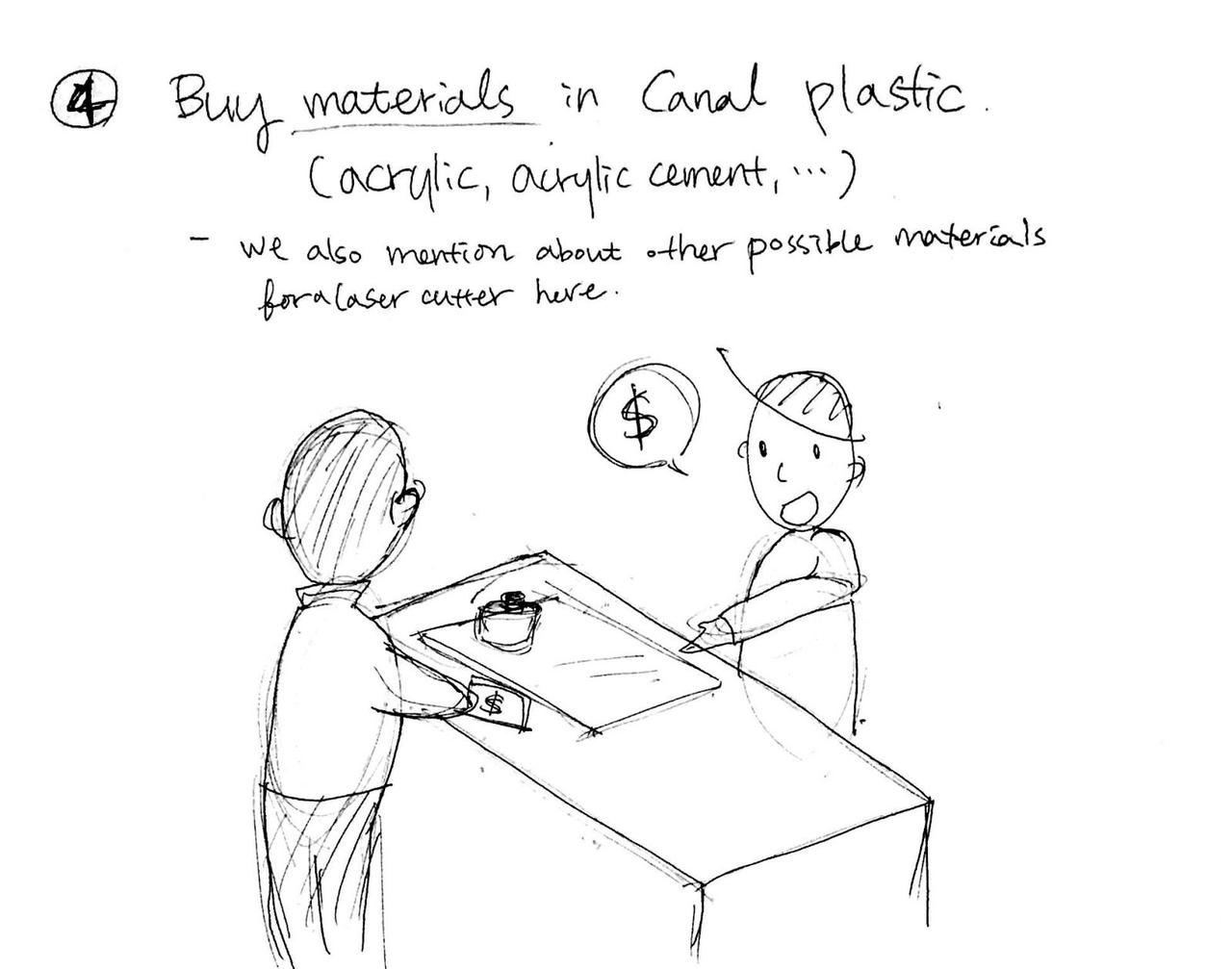
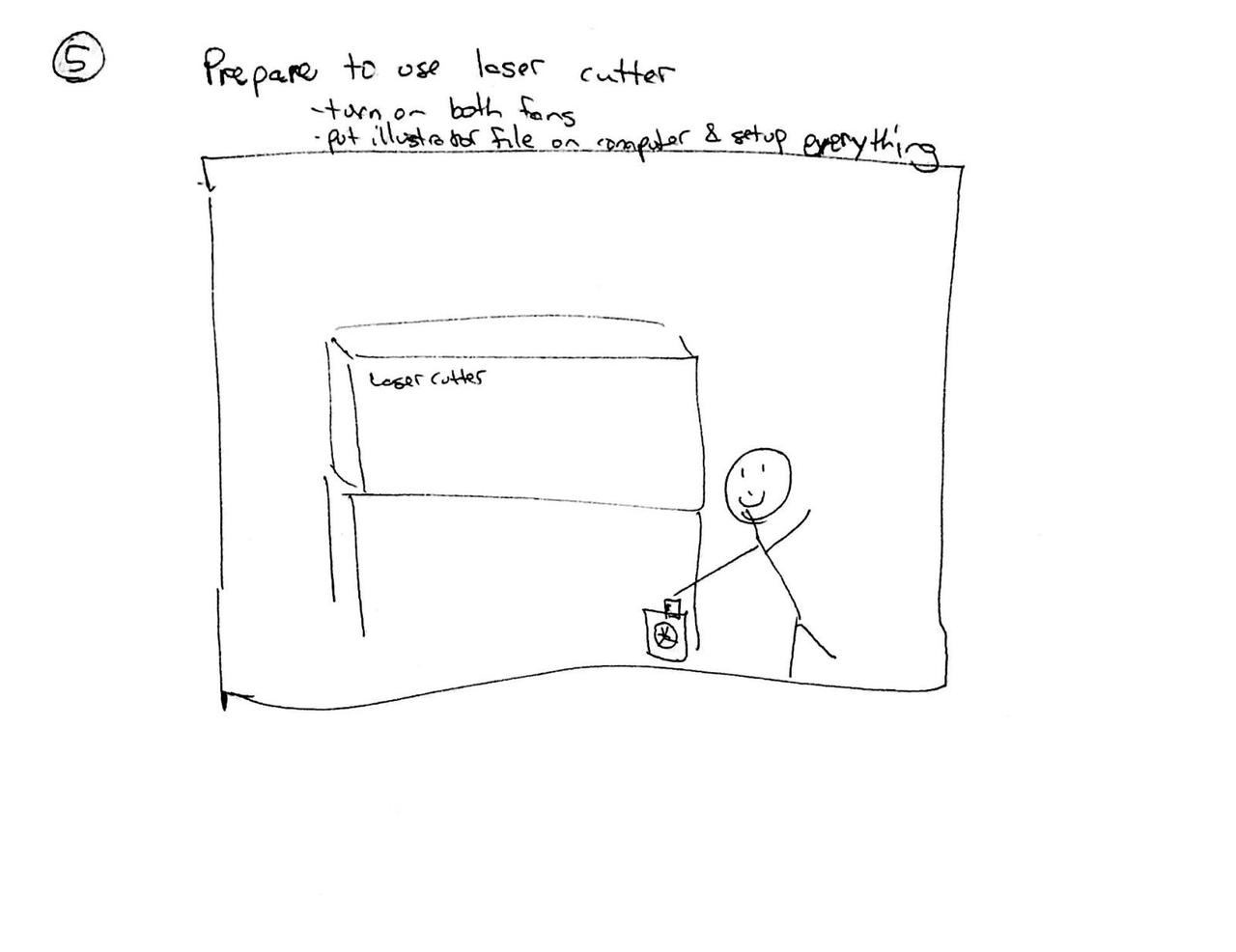

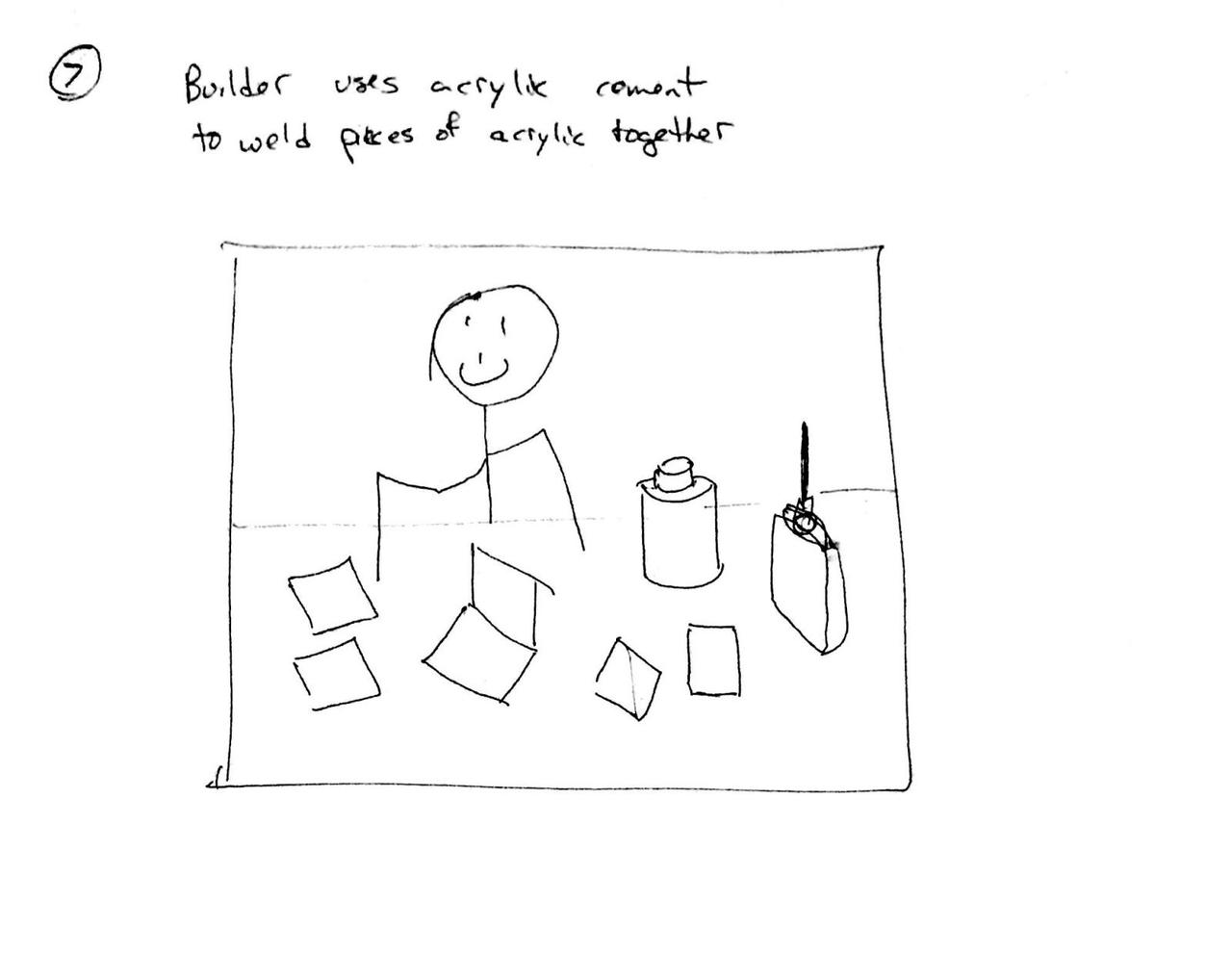
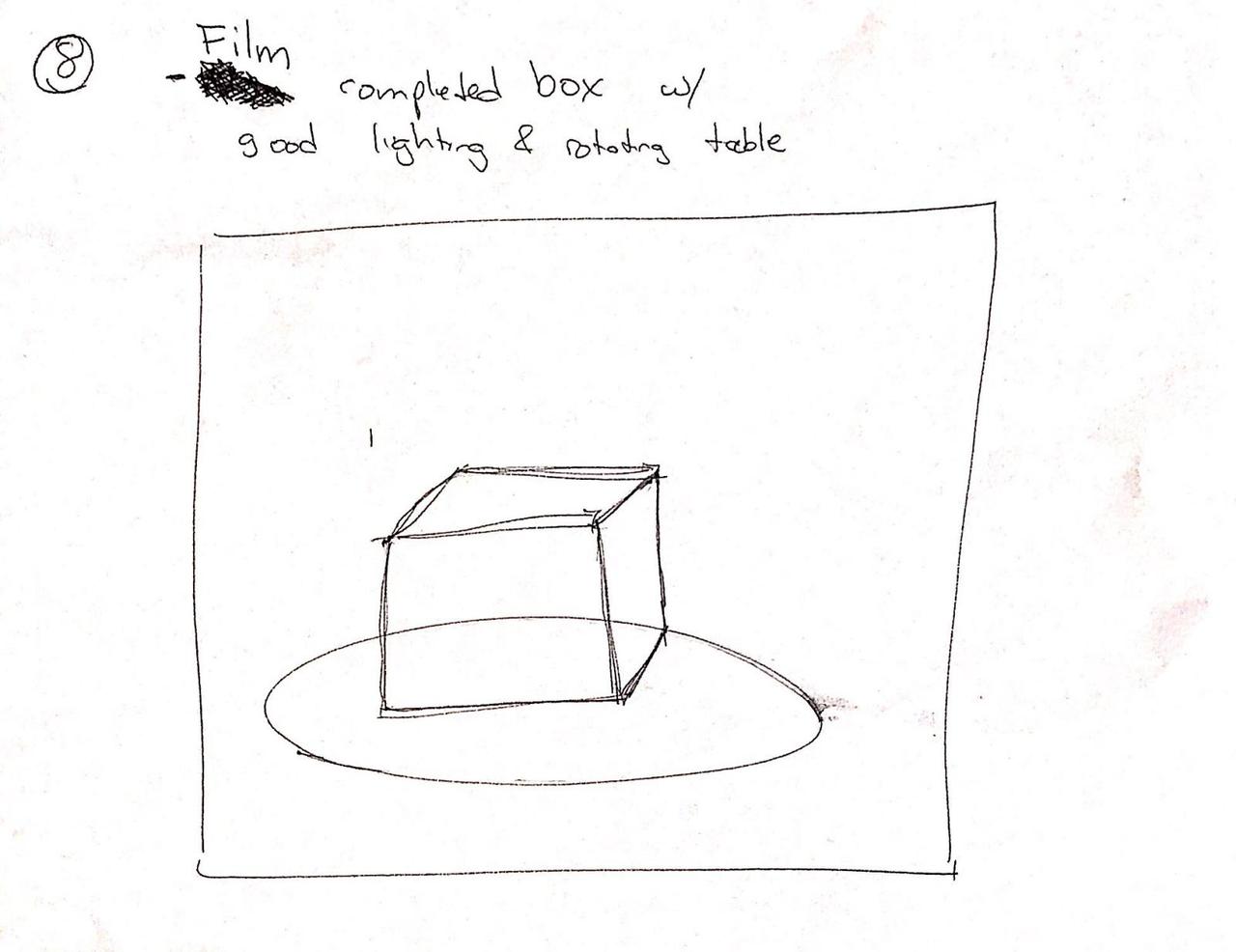
Ira Glass - Storytelling
Ira Glass is a radio personality on the public radio show This American Life. I’ve never listened to the show myself but they have millions of listeners. Ira was interviewed some number of years ago storytelling in media, and he had some good advice for beginners in this field.
First, he said we shouldn’t write stories like how we were taught to write in middle school. Back then, every essay needed to have a main idea, a topic sentence, supporting arguments, and a conclusion. He said this is all wrong. Every story should use two tools. First, an anecdote, or sequence of actions. The sequence of actions should be constantly raising questions and then answering them. And second, a moment of reflection. There needs to be a point or deeper meaning to why we are listening to the story. A storyteller should flip back and forth between these two things. Often, the second item is left out.
Ira went on to say that finding a good story to tell is difficult. He said you have to cut a lot of crap so that the good content can thrive. I like his comments about failure. He said that a lot of stuff will go nowhere and we should be happy if we are failing a lot, because that means we are doing it right. He also said “if you are not failing all the time, you are not creating a situation where you can get super lucky.”
This part is the most thought provoking. What are my expectations about creative work, and how are they inaccurate? My experiences with teaching Python programming has shown me that a lot of beginners have unrealistic expectations for themselves and get frustrated at themselves for bad reasons. I might have similar unrealistic expectations for myself for work in new fields.
In the beginning, most of what we create will not meet our expectations or goals of what we want to achieve. During this phase we need to stick with it and produce a lot of content to find something that works.
Finally, two common errors. The first errors is to not talk like a normal human being. The second is to insert some of your own personality and insight into the story. In a good conversation, two people are contributing and listening to the other person. In a video production it will mostly be about them, but we should also show some of ourselves so that people can see us interacting with the other person and see the world through our eyes.
Comments